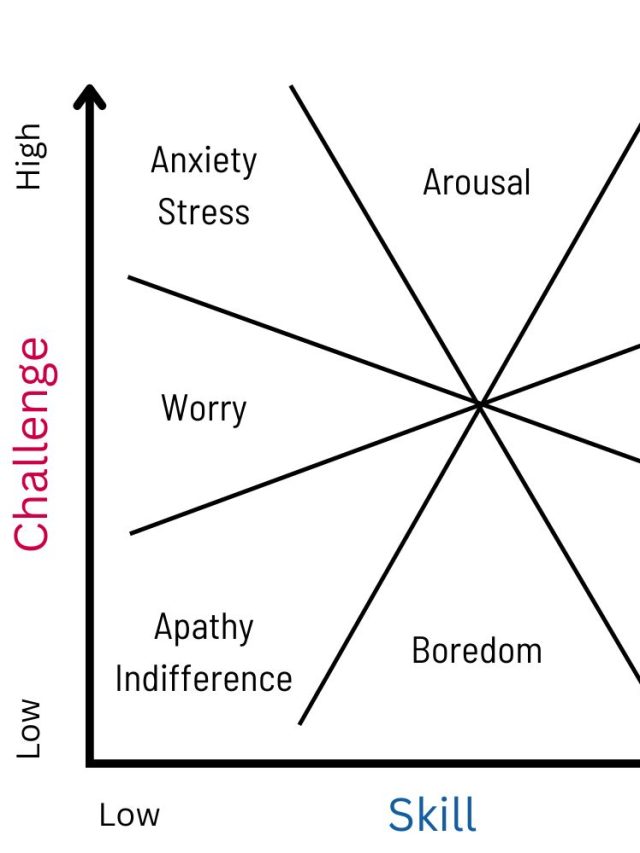A politician, govt. authority, or influential professional, and even many CEOs may be risk-averse. Persuading them to take a risk on your big idea or proposal can be one of the biggest hurdles.
In this article, I will describe verbal and written persuasion tactics to convince influential people to take risks and engage with you, especially when they resist change and want to simplify their decision-making. Whether you have a new business idea, or you have a social issue to bring up, or have prepared a solution that needs their approval, these tactics will keep them in the conversation and make them think more positively about your ideas.
Consultants, contractors, organization representatives, young startups, students, and corporate leaders have to persuade influential people and authorities at some point, and there is no escaping it. Most reach approval only when they handle it delicately. This article will help you optimize your “pitch.”
The philosophy behind these persuasion tactics is that humans, particularly influential people, have particular biases that align their their motives and identity.
- Inside the politician’s, industry leader’s, and celebrity’s mind
- 1. Highlight Social Success Stories
- 2. Illustrate the Benefits
- 3. Showcase Emerging Acceptance
- 4. Bridge the Gap Between Groups
- 5. Stress Simplicity and Feasibility
- 6. Emphasize Existing Investments
- 7. Align With Their Vision
- 8. Leverage Loss-Aversion
- 9. Appeal to Their Leadership Role
- 10. The Incremental Commitment Approach
- 11. Activate the Ben Franklin Effect
- 12. Provide Control
- Bonus: Be Likable
- Dos and Don’ts
- Takeaway
Inside the politician’s, industry leader’s, and celebrity’s mind
Decision-making biases: As executives, leaders typically are very careful. They often resist change and don’t want to take huge risks, especially the ones that make them look bad if they fail. So, the guiding philosophy is to build trust in the chances of success and show how the burden of making your idea successful doesn’t fall on them. To build chances of success, demonstrate proof of concept or propose a low-risk silent implementation.
Identity biases: Personal image, their company/governing region’s image, and their cultural/religious/philosophical identity cannot be threatened. The concept of – my people, my company, my political agenda – takes the center. Authorities, particularly politicians, department heads, lobbyists, and media celebrities, will first protect their image and their existing fans/followers/constituents. So, any plan you propose should be framed to appeal to that identity.
Loss-aversion: Influential people have a lot to lose, so they tend to be risk/loss-averse. Your pitch to them should highlight what they gain and simultaneously what they will not lose. This requires homework.
Proposal Fatigue: Influential people are in demand – many, like you, want their attention, opinion, or opportunity. They hear new ideas day in and day out, and most don’t materialize into anything. But they lose their time, so they make rapid judgments and reach a decision-fatigue. They will then rely on quick heuristics to evaluate your offer. These heuristics – their way of landing on decisions – are based on their experience. If their experience says a type of product for farmers will fail, they will give minimal attention to it. As the one pitching your idea, your job is to persuade and cut through their heuristics and proposal fatigue.
Control biases: Authorities, when persuaded, would want to feel a sense of ownership in implementing your idea. Apart from monetary benefits, they need a psychological sense of ownership. That comes from the ability to positively control the idea: contribute to the idea, customize the idea.
So, how should you leverage these mindsets? I recommend playing into their biases and giving clarity on very specific fears they have about effort, success, and goals. I’ve included examples for persuading a CEO and politician.

1. Highlight Social Success Stories
Point to numerous instances where peers and contemporaries have adopted similar approaches and experienced positive outcomes. This emphasizes the value of popular “wisdom” and that the wisdom is valid and verifiable.
- Politician: Several neighboring constituencies have adopted solar energy initiatives. As a result, they have reductions in electricity costs for residents and have boosted local green businesses.
- CEO: Company X pivoted to a more customer-centric model. They’ve reported a 15% increase in customer retention and a significant boost in their stock prices. I believe this will benefit us a lot.
Personal example: I’m no authority, but a friend of mine who isn’t in my domain persuaded me to 10x the details I added in an article with a clear example of how some YouTube influencers give details that make them relatable. Next thing I did – redo my content.
2. Illustrate the Benefits
Emphasize the potential rewards of adopting the change. Highlight the prospects of better yields and the enhanced credibility that comes with progressive action.
- Politician: Implementing a new public transport system will reduce traffic congestion, leading to decreased pollution and faster commutes for residents
- CEO: By integrating AI into our customer service, we can reduce response times by 70%. It will enhance customer satisfaction and loyalty.
3. Showcase Emerging Acceptance
Identify smaller areas or pockets within the city where changes have already been embraced. By presenting these as examples, emphasize the growing momentum behind the initiative and how their support can amplify this effect.
- Politician: A smaller town in our state recently revamped its public parks. More people are going, and surveys show they are far more happy with their neighborhood. It’s gotten some business potential, too, because of the nearby eateries.
- CEO: Startups in our industry are rapidly adopting a decentralized work model. They report higher productivity and employee satisfaction. We can adopt those.
4. Bridge the Gap Between Groups
Illustrate that those who may seem to belong to an out-group share values, goals, and aspirations with the in-group, fostering a sense of unity and shared purpose. Highlight the non-zero-sum game – where one person’s benefit is another person’s benefit.
- Politician: While urban and rural residents have different needs, this infrastructure project will benefit both by improving transport and commerce between these areas.
- CEO: Although our sales and tech teams have different day-to-day operations, this new software will streamline communication between them. It will foster collaboration and shared goals.
5. Stress Simplicity and Feasibility
Highlight that most of the groundwork has been laid out, making the implementation straightforward. This eases their decision-making process by presenting a ‘plug and play’ approach. Avoid proposing a change to what’s already working and set in motion. It’s important to work within their constraints. This removes the possibility of rejection over technical limitations.
- Politician: The proposed community center leverages existing land and resources, with 60% of the project funding already secured from state grants.
- CEO: Our proposed shift towards e-commerce utilizes our existing logistics and supply chain. The vendor has done this before in a very similar situation; your transition will be smooth.
Personal example: I failed to persuade during an education meeting to design a cognitive science introductory course at UGC Delhi because I did not have an implementable version of my idea. I only had a philosophy and guidelines. The competing team had an implementable idea, and they got the chance.
6. Emphasize Existing Investments
Remind them of the effort and resources they’ve already committed. By moving forward with this implementation, they’ll be building on those investments, bringing their vision closer to fruition on a grand scale.
- Politician: Our constituency has already invested in roads and utilities. By adding the proposed housing project, we can bring it all together.
- CEO: We’ve already invested significantly in digital infrastructure. It’s now time to leverage that by launching our new digital marketing initiative.
7. Align With Their Vision
Recognize their unique perspectives and ideas. Show how the proposed project aligns and enhances their vision.
- Politician: You’ve always championed education. This new library project will be a testament to your commitment.
- CEO: Your vision has always been to be at the forefront of innovation. Adopting this new technology aligns perfectly with that vision.
8. Leverage Loss-Aversion
People are loss-averse – they want to avoid losing something they have and also avoid doing anything that interferes with a guaranteed gain in the future. Paint a picture of the potential problems that could escalate if action isn’t taken. Emphasize the warning signs that may already be appearing. This will trigger the innate desire to prevent loss.
Tip: Don’t make a doomsday pitch and say, “It’s too late already”. Your solution should ideally always be in a “…before it’s too late” timing.
- Politician: If we don’t invest in water conservation now, our constituency might face severe shortages in a few years, which other regions are already experiencing.
- CEO: Not pivoting to a digital-first approach could see us losing market share, as many competitors are already experiencing gains from such shifts.
9. Appeal to Their Leadership Role
Stress on the fact that there’s an audience – even in those excluded groups – looking up to them for guidance and solutions. By stepping in, they position themselves as heroes who get even more support from a wider audience. There will be people dependent on influential people, and this often triggers a politician to act more than professional authorities.
Tip: Have numbers ready about the impact and potential support they get in slow political conversations.
- Politician: They look to you for progressive actions. Approving this healthcare center will show them you’re responsive to their needs.
- CEO: Our employees and stakeholders are looking for visionary leadership. Adopting this new approach can cement your legacy as a forward-thinking leader.
10. The Incremental Commitment Approach
Highlight the effort that they have already put into helping people in a similar way as your idea will help. Show additional small effort (your idea) can bring it all together. Authorities are likely to do you a small favor (like let you explain it to their assistant or ask for a demo), but doing so will likely make them do you a bigger favor later (foot in the door technique). Be prepared to act on that favor there and then with easily shareable documents and handouts.
- Politician: Let’s start by running a pilot program for the new waste management system in one district before expanding it.
- CEO: Let’s introduce the new software to one department first, assess its efficacy, and then roll it out company-wide.
Personal example: In a consulting project, I had no numbers to show why they must use a specific theoretical model I made to guide student learners, but I could only emphasize how they are doing everything they can to improve education in a sincere way. We discussed the model in steps over many meetings, and then they took the chance to pilot it once an operational framework was created.
11. Activate the Ben Franklin Effect
Point out instances where their past actions have already benefited the marginalized or excluded. This creates a perception that they already favor the cause, making it psychologically easier for them to commit further. The Effect states people rationalize helping others by concluding they must like the people they helped. This helps authorities have positive feelings toward the beneficiaries of your idea, especially those who have already benefited.
- Politician: Your previous initiatives have already boosted local businesses. This new project will be an extension of that.
- CEO: In the past, you’ve emphasized employee well-being. This new flexible work model aligns with that ethos and builds upon your previous efforts.
12. Provide Control
Tell the authority that they can customize the idea. Tell them that you can make changes as per their specific requirements and paint it as a collaborative implementation. This ensures they have the chance to co-create your idea.
- Politician: To make my digital product more aligned with you, we can personalize it with your choice of branding and just provide the technology. We’ll make it look and feel like you, yourself, are running the platform.
- CEO: I can work on any use case you prefer, and we can deploy that first. (provide a list of use cases to choose from).
Bonus: Be Likable
Ensure the listener starts liking you. You may use jokes or showcase warmth with sincerity. Talk to them about their interests and connect that to your experiences. This even grabs attention a lot more than just a good pitch. Essentially, you then start your conversation with something they really care about. This makes you relatable, too.
As long as you seem authentic, you’ll rarely have a problem. People are more compliant when they are in a good mood. If they feel good meeting you, chances are your odds of persuading them are significantly higher.
Dos and Don’ts
These are generalized dos and don’ts, but know your audience. Some people may prefer everything I’ve said in the Don’ts section.
| Dos | Don’ts |
|---|---|
| Align with their motive | Brag about your achievements |
| Show collaboration opportunities | Point mistakes rudely |
| Simplify their decision-making | Ask for a big favor immediately |
| Show you understand their position and context | Make assumptions |
Takeaway
Persuasion is about saying the things that matter and minimizing the burden of attention and effort on the listener. Persuasion occurs in a context, and convincing authorities is about understanding that context. Align your words with the authority’s interest, motives, fears, goals, and past effort to increase your chances of getting approved.

Hey! Thank you for reading; hope you enjoyed the article. I run Cognition Today to paint a holistic picture of psychology. My content here is referenced and featured in NY Times, Forbes, CNET, Entrepreneur, Lifehacker, about 15 books, academic courses, and 100s of research papers.
I’m a full-time psychology SME consultant and I work part-time with Myelin, an EdTech company. I’m also currently an overtime impostor in the AI industry. I’m attempting (mostly failing) to solve AI’s contextual awareness problem from the cognitive perspective.
I’ve studied at NIMHANS Bangalore (positive psychology), Savitribai Phule Pune University (clinical psychology), Fergusson College (BA psych), and affiliated with IIM Ahmedabad (marketing psychology).
I’m based in Pune, India. Love Sci-fi, horror media; Love rock, metal, synthwave, and K-pop music; can’t whistle; can play 2 guitars at a time.










